With a long and persistent scrutiny of these dresses, I realized that they are slightly different from each other. At selection of schemes something took from one dress, something from another.
Girls who knit from pure silk or viscose, remember, this yarn in the product very much drags on (she did not knit from pure viscose, but read a lot); there were even statements of such a plan: "In the morning I went out in a midi dress, at night I came home at maxi". Therefore, let initially the dress will be short-narrow, we will pull it out when washing and drying.
Mixed in composition types of yarn (for example, cotton-viscose) or pure cotton, such properties do not possess.
I knitted from yarn Seam Exclusive Premium silk 185m / 50gr. Total took 400gr.
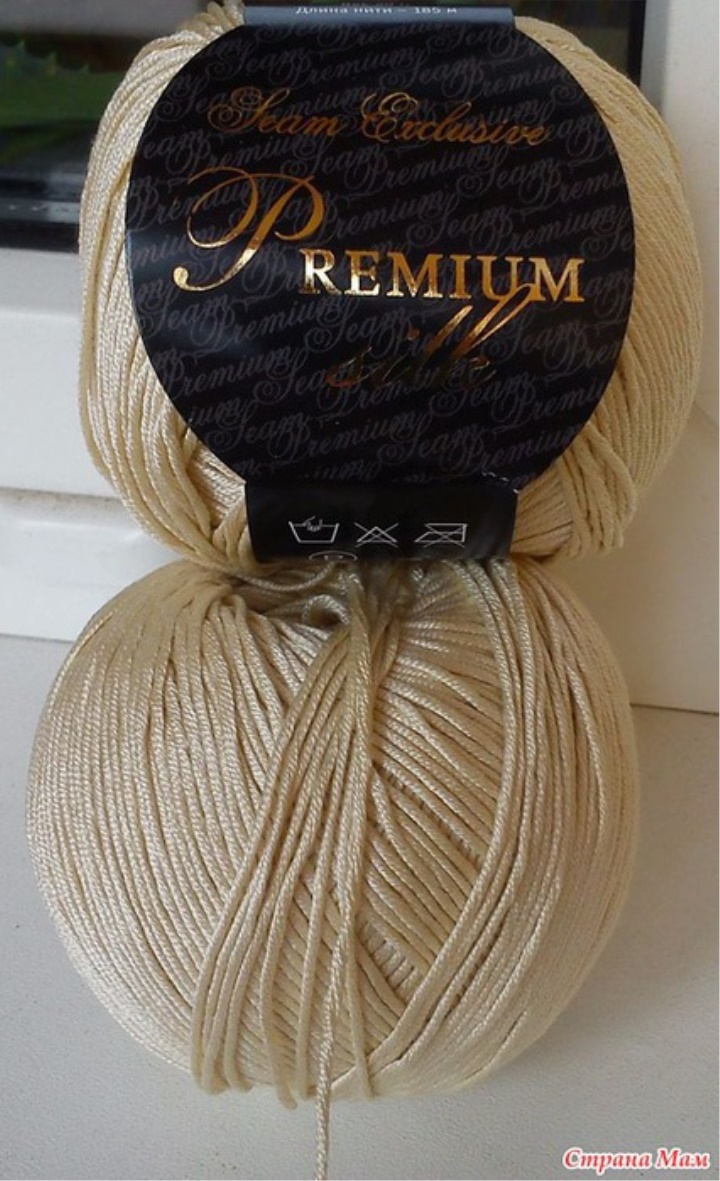
The expansion of the hem of the dress is due to the increase in the number of hearts in the row.
coquette - 8 hearts
under the chest, waist (2, 3 strips on top) - 6 hearts
remaining 3 strips - 7 hearts
top 3 strips - hook No. 2.5; lower 3 - hook number 3.
Strips join in a staggered order, except for 3-4 bands, since in 4 strip the number of hearts increases.
Initially, the scheme was when knitting patterns. In the process of knitting, dresses changed a little. First I wanted to redraw the schemes, but then I refused this idea (so that there were no discrepancies between the schemes and photo samples), just made notes about the changes in the text of the description.
He knitted hearts according to this scheme, but with his own changes

1. Instead of the air loops, we immediately make a set of rows of columns with a crochet (this will be the front side
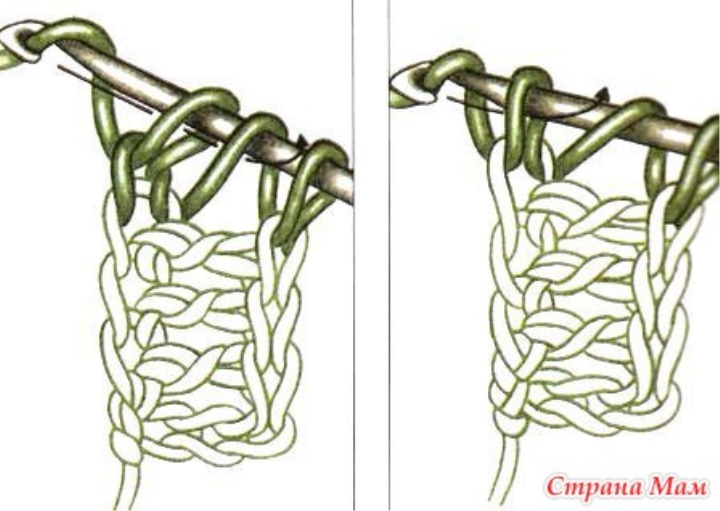
Further we knit on the scheme up to the third row.
2. The third row - do not overturn the work! 3 in. lifting, a column without a crochet between 27 and 28 columns of the first row; turn the work on individuals. side, a column with a crochet in the last column of the previous row, two columns with a crochet in the arch of the previous row; continue on the scheme. In the last arch we knit 2 cns, 1 ssn in the third from the base air loop of the previous row, 1 ssn again in the arch, the connecting column in the column without the crochet (which was knit between 27 and 28 columns of the first row).
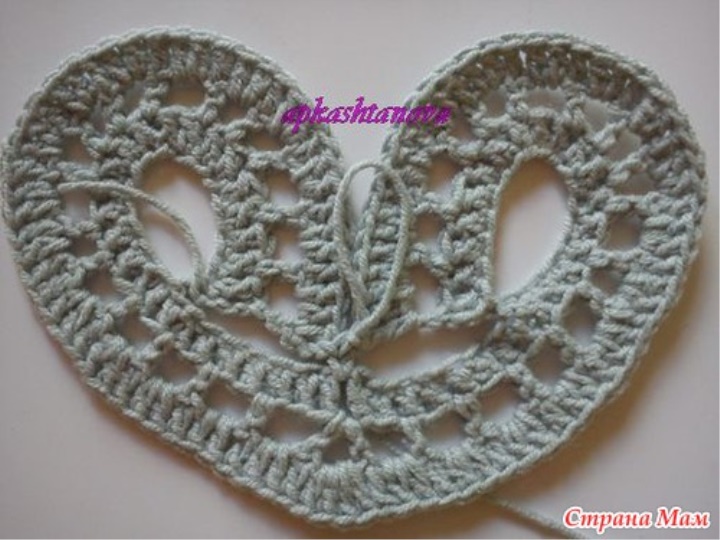
3. Fold the heart in half, connect the connecting posts on the wrong side with a heart piece (10 bars); turn the heart face to itself and knit 3 ss in the columns with the crochet of the left side of the heart, 2 sb, pico, 3 sb, pico, etc. (the total should be 25 picos around the perimeter of the heart).
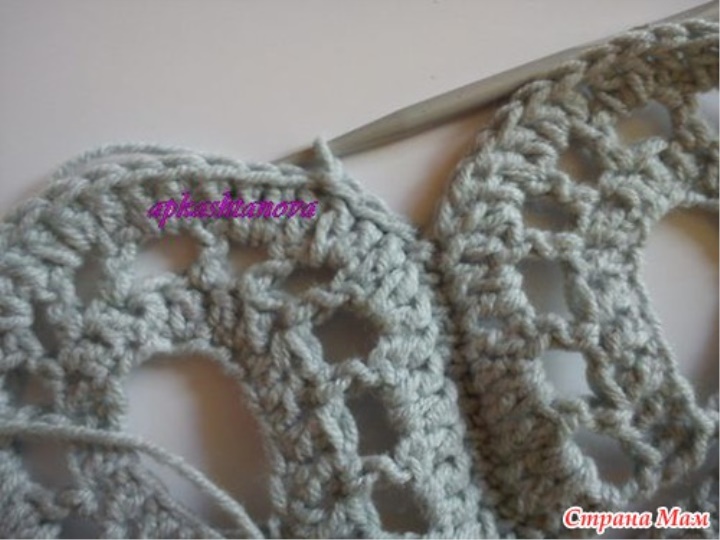
4. Pico close the front half loop of the column without a crochet.
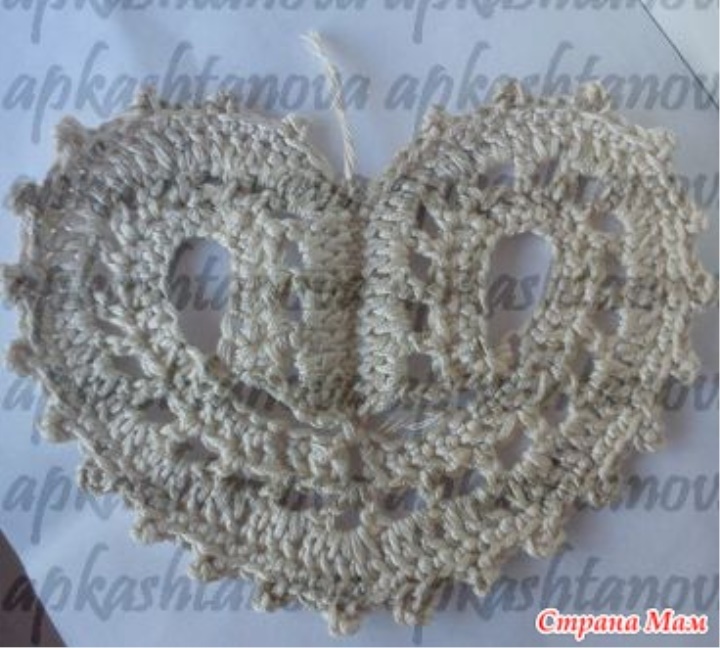
5. The hearts I connect 4, 5, 6, 7 pico; 4, 7 - columns with 2 nakidami, 5,6 - columns with 1 cape.
6. After the 25th pico we knit 3 sb, ss in the remaining columns, ss in the first row of the row.
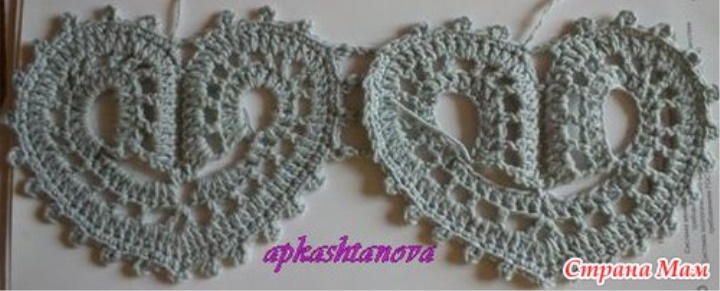
Connecting bands
The bands are connected according to the scheme

I want to draw attention to the fact that the connecting rows I knitted very poorly (to make the dress have something to drag on). The
coquette The coquette is
knitted according to this scheme
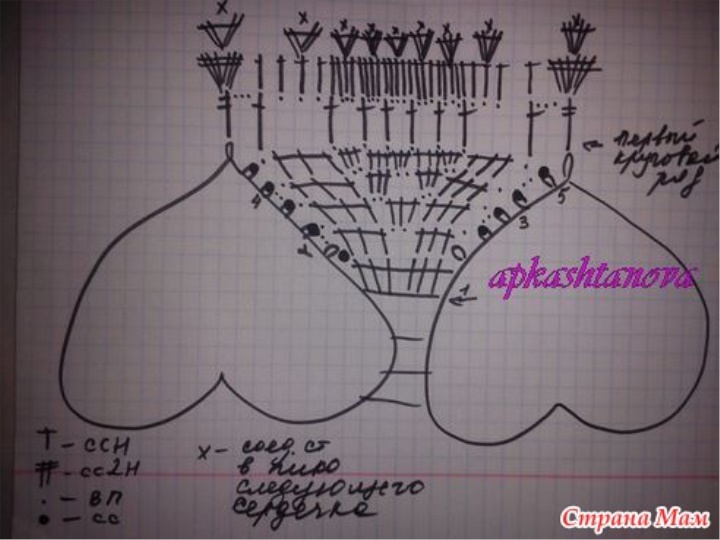
BUT THERE IS CHANGES.
In the process of knitting, the connection scheme of the hearts in the coquette slightly corrected.
Thus, the first row of fans: we attach the thread according to the scheme, then 2 cp, cc in the nearest pico of the right heart, 1 in, then according to the scheme.
In the second circular row: in the diagram, columns with a crochet = we knit posts with 2 nakidami; columns with 2 nakidami = knit posts with 3 nakidami.
MANDATORY! Stitches knit in a loop of the previous row, and not in the arch.
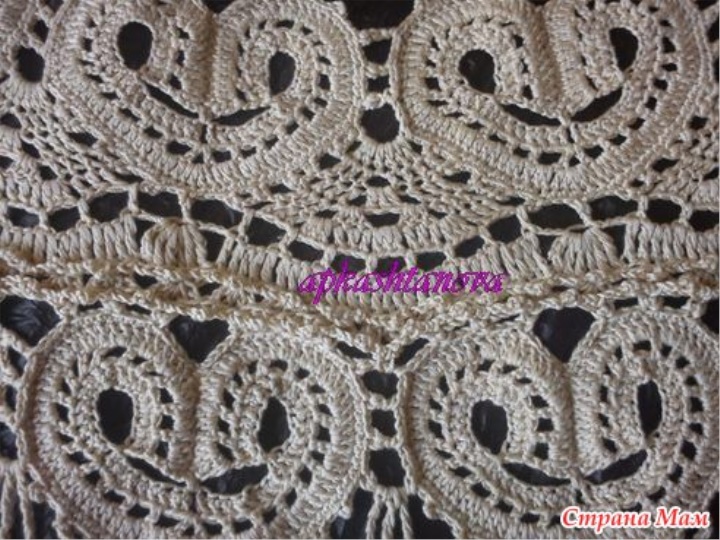
The top of the coquette is tied according to the scheme.
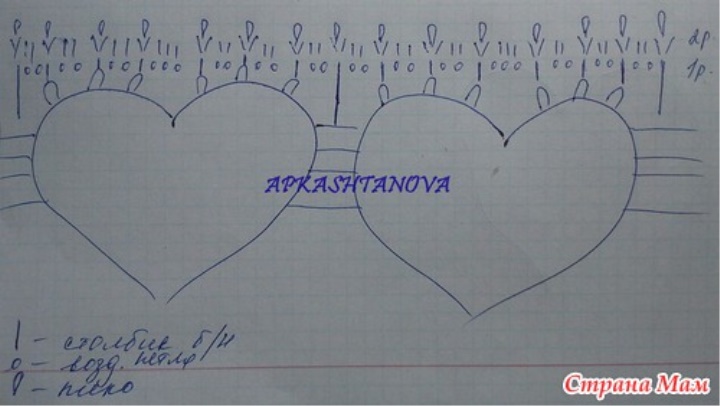
I in the second row tied spandex.
Joining the top two bands The
center of the coquette is a fan between the hearts.
At the coquette we tie the first two circular rows, the third - the connecting line with the second stripe. In the same row, we form the transition to the sleeves.
How I calculated the sleeves: with the pins, first from the center to the sides, the loops of the first and second strips were split among themselves according to the scheme. The same procedure was repeated from the center of the back to the sides. As a result, armholes formed on each side.

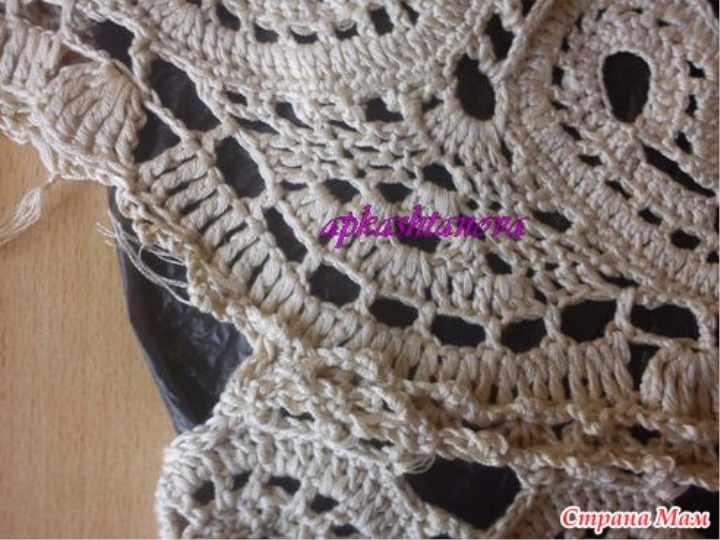
Connection of strips with the expansion of the hem.
We connect according to the connection scheme of the bands, only: each fan connects to the pico heart (we do not forget to initially place the bands so that the hearts are in the staggered order in front)
. Sleeves. hook №2,5 We
knit fans according to the scheme of connection of strips.
The armpit has its own characteristics. In the first row: cc2n from the pico of the nearest heart, cc2n into the heart, 1bn, cc2n in the heart, c2n into the pico of the heart. In the second row between cc2n (where there is a bn) we tie a fan
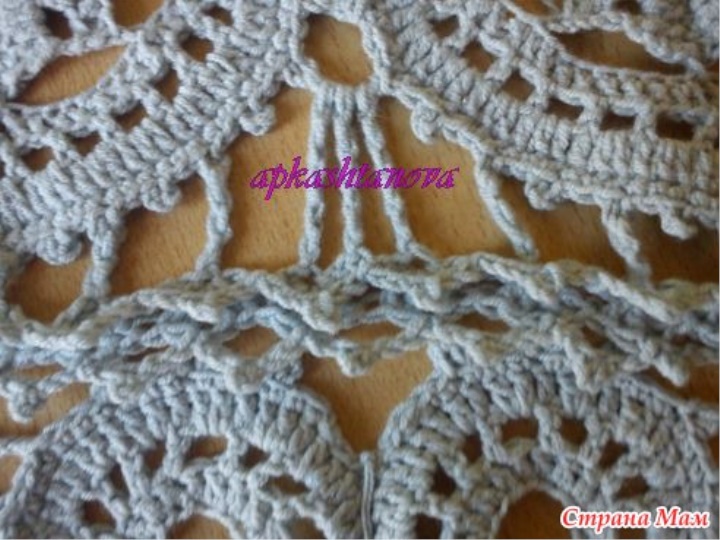
We knit five rows of fans (the fifth - connecting with the next ribbon of hearts). In each row there are 14 fans. Fan: 2 patent pads, 1 in, 2 patent pads.
The first and second strips of sleeves are joined by one row of fans; between the second and third - three rows.
On the sleeves in the upper two bands of the heart are arranged one under the other, the lower one in a staggered order.
Well, we do not forget to tie the trinkets: 2вп, piko from 3 вп, 2вп, сс (it is possible сбн). Oborki can be made more magnificent (I was just afraid that the yarn is not enough). In which loops to fasten the strapping we look at the photo.
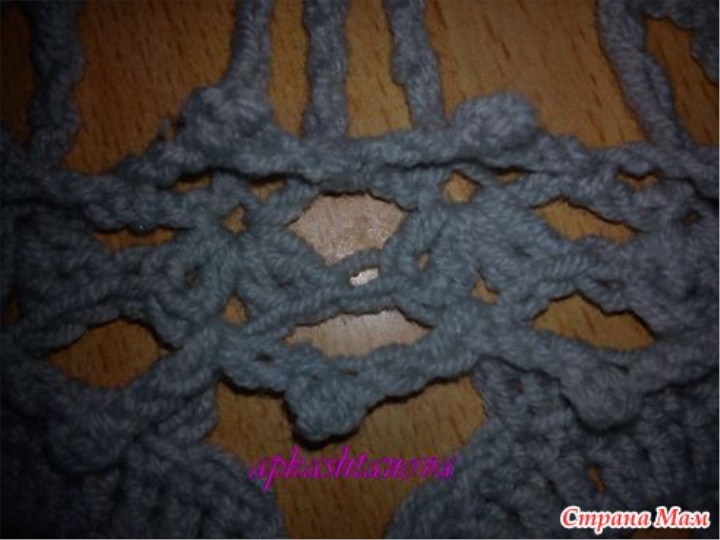
I washed the finished dress with my hands sparing MS, dried horizontally. When unfolding properly stretched the hearts and stretched the connecting rows. After drying, the dress "moved" to the shoulders.
The dress did not iron.
Under the dress she wore a double-stretch case
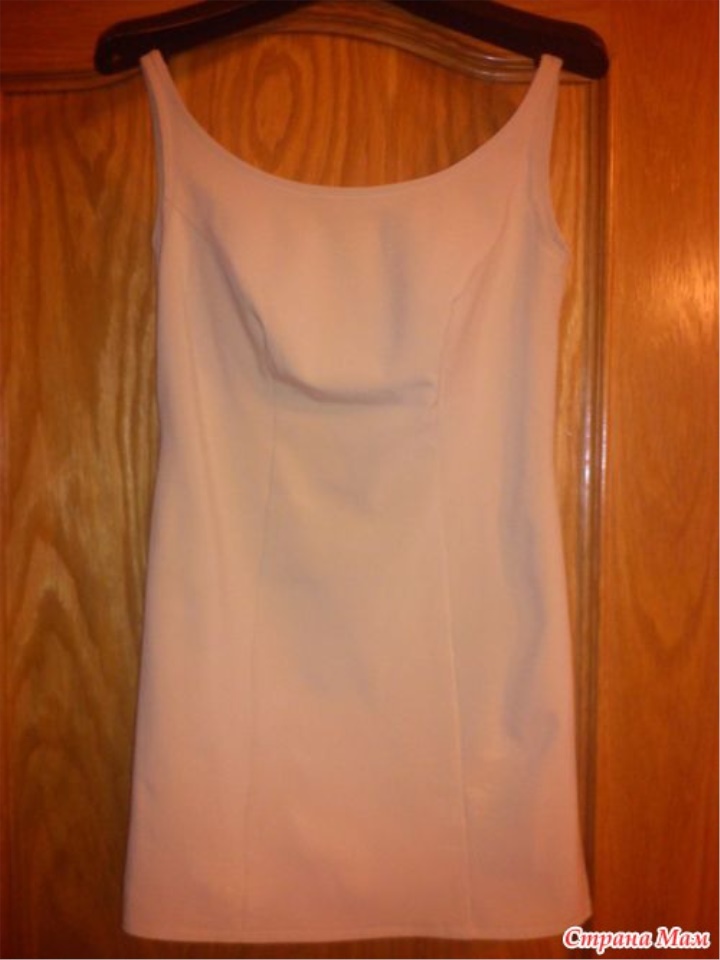
That's kind of all.